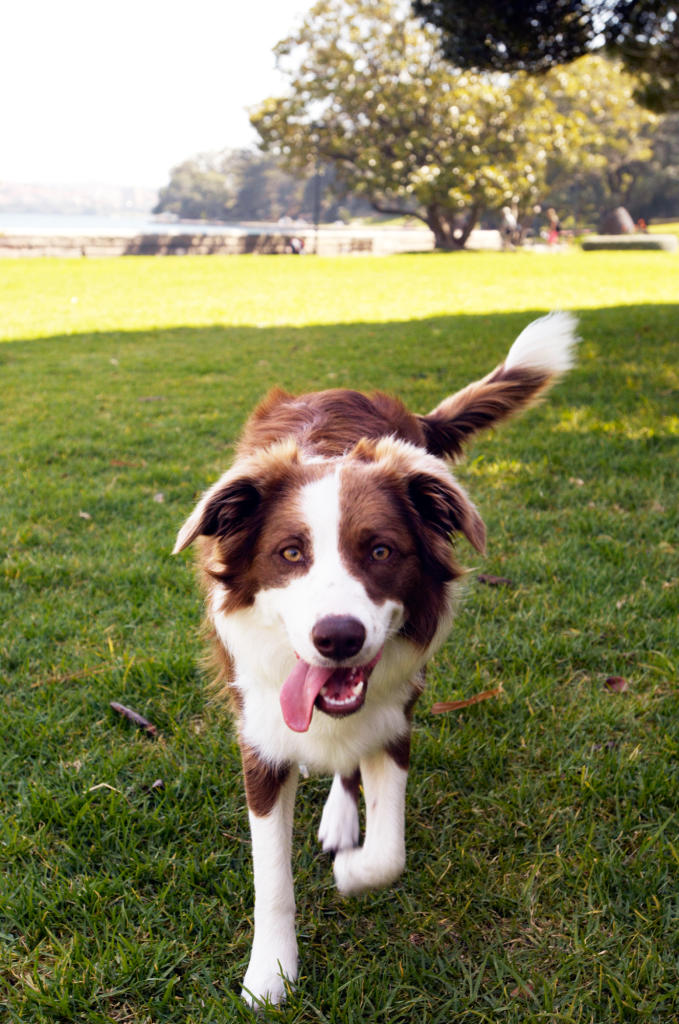
The basic tail wag expresses friendliness. So what does it mean when a cat wags its tail.

A happy dog usually has bright eyes a relaxed open mouth and possibly a gentle pant.
Do dogs always wag their tails when happy. According to Live Science a 2007 study found that when dogs wag their tails to the right its a sign that theyve feeling positive emotions while wagging to the left indicates negative emotions. Aug 24 2016 2 Minutes Most people associate a wagging tail with a happy dog but thats not always the case. Dogs tails can tell us a lot about how a dog is feeling and a wagging tail doesnt.
A wagging tail isnt always a happy welcome-home greeting. Sometimes it means a face full of fur for pet parents or a broken glass flung across the room by a swift swing. Despite these occasional destructive faux pas dogs tails are more than battering rams and wiggly appendages.
Tail wagging is an instinctive behaviour that develops between 3 and 4 weeks of age depending on your dogs breed and is one of the primary communication methods to both other dogs and people. While its commonly thought that dogs wag their tail to show they are happy it can be for other reasons as well such as nervousness and excitement. Its commonly believed that dogs wag their tails to convey that they are happy and friendly but this isnt exactly true.
Dogs do use their tails to communicate though a wagging tail. Puppies arent born wagging their tails as cute as that would be. Tail wagging develops differently in different breeds but it usually begins around three to four weeks into life.
The wag of a tail is instinctive in dogs. Its used as part of their varied communication with one another and with humans. Actually dogs dont even wag their tails to express happiness although they are generally happy when they wag their tails.
A happy dog has relaxedoften exuberantbody language and a smile but will not necessarily wag unless something other than happiness needs to be expressed. The basic tail wag expresses friendliness. Your dogs tail is kind of like an emotional barometer and its important for dogs to convey their emotions to their social group.
While we readily associate a wagging tail with a happy dog the angle and nature of the wag could mean agitation or anger too. Its commonly believed that dogs wag their tails to convey that they are happy and friendly but this isnt exactly true. Dogs do use their tails to communicate though a wagging tail doesnt always mean Come pet me Dogs have a kind of language thats based on the position and motion of their tails.
A tail wag doesnt always mean a dog is happy. Learn why dogs wag their tails and four signs to look at when trying to decipher those tail movements. If a dog is wagging its tail and the rest of its body seems relaxed or is moving along with the wagging you are probably dealing with a happy comfortable dog.
Happy relaxed tail wagging is usually accompanied by a happy facial expression. A happy dog usually has bright eyes a relaxed open mouth and possibly a gentle pant. If their butts wag along with their tails youre definitely looking at a happy dog.
In contrast an unhappy dog will be stiffer in its posture. The dog may still wag its tail but not as furiously as a happy dog would and its tails would be erect rather than relaxed. Why do dogs wag their tails.
The unspoken language of canines Credit. Concerning tail wagging most people associate this motion with the dog being happy. Research from the University of Trento in Italy found that dogs wagged their tails to the right when they were happy and confident and to their left when they were frightened.
It might not be easy to make out which way your pups tail is wagging when youre running behind them in the park. Just like dogs cats move their tails to express their emotions. So what does it mean when a cat wags its tail.
Lets take a look at the different wagging tail movements and what they mean. When your cat thrashes their tail or is thumping it on the ground they are irritated annoyed or angry. Its unlikely that they would wag their tails when they feel alarmed.
The reason is that they usually make noise when they feel threatened. For this reason you can take their tail-wagging as a sign that they are feeling happy. It would be best if you still observed though.